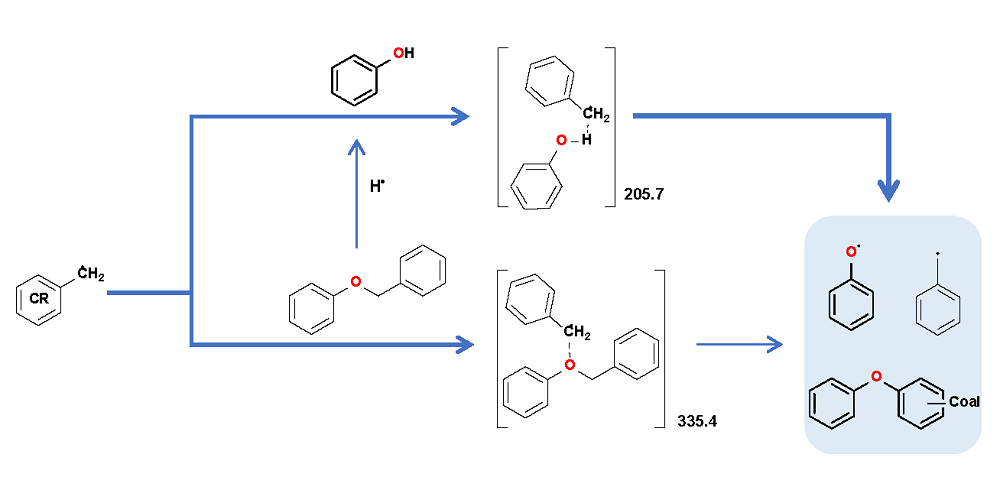Since the early 20th century, direct coal liquefaction has dramatically progressed from laboratory to industrial-scale [
1–
3]. Aside from catalysts and hydrogen pressure, the hydrogen-donor solvent can remarkably increase the oil yield by inhibiting the condensation of the low rank coal hydrogenolysis [
4–
6]. In the industry, complex organic molecules such as polycyclic aromatic hydrocarbons dissolved in coal and their hydrogenated counterparts, served as the hydrogen source [
7,
8]. Niu et al. [
9] investigated the direct coal liquefaction using tetralin as the hydrogen-donor solvent and other polyaromatic solvents (phenanthrene, pyrene, and fluoranthene) for coal dissolution without using a catalyst. In addition to dissolving and dispersing the coal particles, such polyaromatic solvents underwent hydrogenation to yield 9,10-dihydrophenanthrene, 4,5-dihydropyrene, and 1,2,3,10b-tetrahydrofluoranthene, all of which donated their hydrogen atoms effectively during the direct coal liquefaction. In additional studies [
9], the same authors used the isotopic labeling method to analyze the source of hydrogen atoms. Without a catalyst, 80% of the hydrogen consumption was made from the hydrogen-donor solvent under non-isothermal conditions, whereas the hydrogen-donor solvent contributed 65% of the hydrogen consumption under isothermal conditions, implying that the solvent has a substantial role in the reaction results [
10,
11]. Similarly, if the ratio of hydrogen-donor solvent to coal was different, it would result in a difference in product distribution. Generally, increasing the proportion of hydrogen-donor solvent could increase the oil yield during the direct coal liquefaction [
12]. When coal is being heated, radical fragments can be generated, which would condense if required amount of hydrogen is unavailable at the time. Thus, the presence of a hydrogen-donor solvent decreases the likelihood of condensation [
12,
13].













